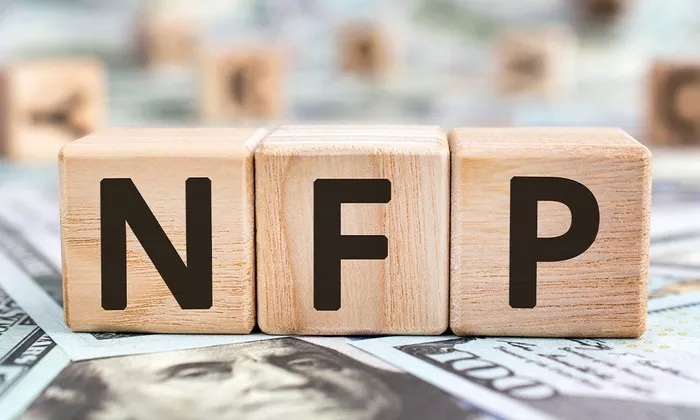I. Introduction to Nonfarm Payroll Trends
In the intricate tapestry of economic indicators, Nonfarm Payroll (NFP) data stands out as a crucial barometer of a nation’s labor market health. This comprehensive metric, released monthly by the U.S. Bureau of Labor Statistics (BLS), encapsulates the net changes in employment across the nonfarm sector, excluding agriculture, private households, and nonprofit organizations. Analyzing Nonfarm Payroll trends provides invaluable insights into the trajectory of job creation or loss, shedding light on the dynamics that shape the labor market landscape. This article delves into the trends and insights derived from Nonfarm Payroll data, exploring their implications for various stakeholders, from policymakers to investors.
II. Key Components of Nonfarm Payroll Trends
Job Creation or Loss: The primary focus of Nonfarm Payroll trends is the net change in employment, reflecting the number of jobs added or lost during a specific period. Positive trends indicate job creation, contributing to economic expansion, while negative trends suggest job losses and potential economic contraction.
Unemployment Rate: Nonfarm Payroll trends are closely linked to the unemployment rate. As job creation or loss influences the overall employment landscape, it concurrently impacts the percentage of the labor force that is unemployed. Understanding the interplay between Nonfarm Payroll trends and the unemployment rate provides a more comprehensive view of labor market dynamics.
Sectoral Analysis: Nonfarm Payroll data is often dissected to reveal trends within specific sectors. Sectoral analysis allows for a deeper understanding of which industries are experiencing growth or decline in employment, providing insights into broader economic trends.
III. Interpreting Nonfarm Payroll Trends
Volatility and Market Reactions: Nonfarm Payroll releases often lead to market volatility, especially in financial markets. Investors closely watch the data, and unexpected deviations from expectations can trigger significant reactions in stock prices, bond yields, and currency values.
Economic Confidence Indicator: Nonfarm Payroll trends serve as a critical economic confidence indicator. Consistent job creation is generally interpreted as a positive signal, reflecting confidence in economic prospects. Conversely, prolonged negative trends may raise concerns about economic stability.
Inflation and Wage Growth: Nonfarm Payroll trends influence inflation and wage growth. Strong job creation can contribute to increased consumer spending, potentially leading to higher inflation. Wage growth trends are also monitored, as they impact consumer purchasing power and overall economic health.
IV. Long-Term Patterns in Nonfarm Payroll Data
Cyclical Employment Patterns: Nonfarm Payroll trends often exhibit cyclical patterns influenced by economic cycles. During periods of economic expansion, job creation tends to be robust, while economic contractions may result in job losses.
Structural Changes in Industries: Long-term Nonfarm Payroll trends also reflect structural changes within industries. Shifts in technology, globalization, and market demands can impact the employment landscape, leading to evolving patterns in job creation and loss.
Demographic Influences: Demographic factors, such as population growth, aging, and workforce participation rates, play a role in shaping long-term Nonfarm Payroll trends. Understanding demographic shifts provides insights into future labor market dynamics.
V. Factors Influencing Nonfarm Payroll Trends
Economic Policies: Government fiscal and monetary policies play a significant role in influencing Nonfarm Payroll trends. Stimulus measures, tax policies, and interest rate decisions can impact the rate of job creation or loss.
Global Economic Conditions: Nonfarm Payroll trends are not isolated; they are influenced by global economic conditions. Factors such as international trade, geopolitical events, and global economic health can have ripple effects on employment trends.
Technological Advances: Advances in technology contribute to both job creation and loss. Automation and technological innovation can lead to increased efficiency in some sectors but may result in job displacement in others.
VI. FAQs on Nonfarm Payroll Trends
1. What does Nonfarm Payroll data measure?
Nonfarm Payroll data measures the net changes in employment across the nonfarm sector, excluding agriculture, private households, and nonprofit organizations. It provides insights into job creation or loss.
2. How are Nonfarm Payroll trends linked to the unemployment rate?
Nonfarm Payroll trends impact the unemployment rate. Positive trends, indicating job creation, can lead to a lower unemployment rate, while negative trends may contribute to an increase in unemployment.
3. Why do Nonfarm Payroll releases cause market volatility?
Nonfarm Payroll releases often lead to market volatility as investors closely watch the data for indications of economic health. Deviations from expectations can trigger significant reactions in financial markets.
4. What are the long-term patterns in Nonfarm Payroll data?
Long-term Nonfarm Payroll trends exhibit cyclical patterns influenced by economic cycles, structural changes in industries, and demographic influences. Understanding these patterns provides insights into broader economic trends.
5. How do economic policies influence Nonfarm Payroll trends?
Government fiscal and monetary policies, including stimulus measures, tax policies, and interest rate decisions, play a significant role in influencing Nonfarm Payroll trends. These policies can impact the rate of job creation or loss.
In conclusion, Nonfarm Payroll trends serve as a vital compass for navigating the complexities of the labor market and understanding broader economic trends. Analyzing the nuances of job creation or loss, their impact on various economic indicators, and the factors influencing these trends empowers stakeholders to make informed decisions in a dynamic and interconnected global economy.

